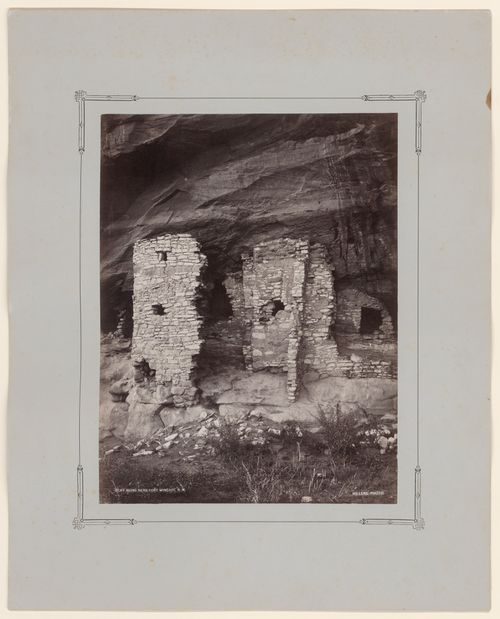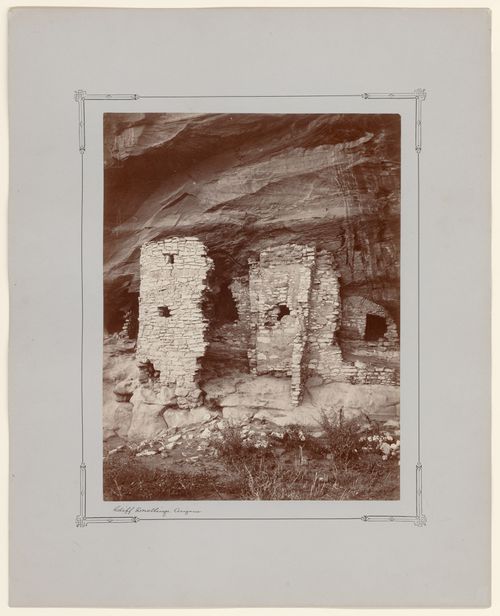Sub-series
AP178.S1.1988.PR07.SS10
Description:
This project subseries documents the Ligação Pedonal do Pátio B do Chiado, L. do Carmo e Ter.do Carmo in Lisbon, Portugal. The office assigned the dates 1988-1990 for this project. The project consists of a pedestrian passageway between the Patio B, the ruins of the Carmo Church, Largo do Carmo and the Elevador de Santa Justa. The project was not complete in 1990s, but Siza completed the project in 2008. Documenting this project are studies. Documentation for this project can also be found in subseries AP178.S1.1988.PR07.SS1.
1988-1998
Ligação Pedonal do Pátio B do Chiado, L. do Carmo e Ter.do Carmo [Pedestrian connection between courtyard B and Largo do Carmo], Lisbon, Portugal (1988-1998)
Actions:
AP178.S1.1988.PR07.SS10
Description:
This project subseries documents the Ligação Pedonal do Pátio B do Chiado, L. do Carmo e Ter.do Carmo in Lisbon, Portugal. The office assigned the dates 1988-1990 for this project. The project consists of a pedestrian passageway between the Patio B, the ruins of the Carmo Church, Largo do Carmo and the Elevador de Santa Justa. The project was not complete in 1990s, but Siza completed the project in 2008. Documenting this project are studies. Documentation for this project can also be found in subseries AP178.S1.1988.PR07.SS1.
Project
1988-1998
Sub-series
Notebooks and Sketchbooks
CP138.S4.SS1
Description:
Sub-series consists of notebooks, pads of paper and sketchbooks, containing sketches, drawing and texts relating to the following projects: Anarchitecture (1974); Automation House (1972); A W-Hole House (1973); the Caribbean Orange (1978); Day's End (1975); Food (1971); Fresh Air Cart (1972); Garbage Wall (1970); Office Baroque (1977); Photo-Fry (1969); Tree Dance (1971); Untitled Cutting (1978) for Alanna Heiss's Twentieth Century Ruins; and studies for cut drawings. Material in this sub-series was produced between 1969 and 1978. Sub-series contains bound volumes of sketches and texts.
[1969-1978]
Notebooks and Sketchbooks
Actions:
CP138.S4.SS1
Description:
Sub-series consists of notebooks, pads of paper and sketchbooks, containing sketches, drawing and texts relating to the following projects: Anarchitecture (1974); Automation House (1972); A W-Hole House (1973); the Caribbean Orange (1978); Day's End (1975); Food (1971); Fresh Air Cart (1972); Garbage Wall (1970); Office Baroque (1977); Photo-Fry (1969); Tree Dance (1971); Untitled Cutting (1978) for Alanna Heiss's Twentieth Century Ruins; and studies for cut drawings. Material in this sub-series was produced between 1969 and 1978. Sub-series contains bound volumes of sketches and texts.
Sub-series 1
[1969-1978]
photographs
DR2023:0015
Description:
Plates from the series "UN DICTIONNAIRE...Illuminations, 1970-2000" comprises of a portion of individual plates grouped according to 38 series that Charney arranged by themes and numbered by series and plate in a discontinuous fashion. Contains series 4 "Décomposition" et series 7 "Ruines".
circa 1970-2000
Plates from the series 4 and 7, Un dictionnaire
Actions:
DR2023:0015
Description:
Plates from the series "UN DICTIONNAIRE...Illuminations, 1970-2000" comprises of a portion of individual plates grouped according to 38 series that Charney arranged by themes and numbered by series and plate in a discontinuous fashion. Contains series 4 "Décomposition" et series 7 "Ruines".
photographs
circa 1970-2000
photographs
PH1980:1220:003
Description:
- View of ruins in the citadel. "Taken from the roof of one of the numerous ruined buildings of the northeast side of the citadel." The building in the middle distance is the Anand Mahal. The photographer was facing southwest (see building history).
architecture, military
March - April 1855
View of ruins within the citadel walls from the northeast showing the Anand Mahal in the background, Beejapore (now Bijapur), India
Actions:
PH1980:1220:003
Description:
- View of ruins in the citadel. "Taken from the roof of one of the numerous ruined buildings of the northeast side of the citadel." The building in the middle distance is the Anand Mahal. The photographer was facing southwest (see building history).
photographs
March - April 1855
architecture, military
PH1982:0047
Description:
- The subject of photograph PH1979:0148 is identified as cliff dwellings near Fort Wingate, New Mexico based on the inscription in the negative on the almost identical photograph PH1982:0047: "CLIFF RUINS NEAR FORT WINGATE, N.M.". The inscription on photograph PH1979:0148 "Cliff Dwellings, Arizona" is presumed to be erroneous.
architecture
1872-1885
View of ruins of cliff dwellings near Fort Wingate, New Mexico
Actions:
PH1982:0047
Description:
- The subject of photograph PH1979:0148 is identified as cliff dwellings near Fort Wingate, New Mexico based on the inscription in the negative on the almost identical photograph PH1982:0047: "CLIFF RUINS NEAR FORT WINGATE, N.M.". The inscription on photograph PH1979:0148 "Cliff Dwellings, Arizona" is presumed to be erroneous.
architecture
PH1979:0148
Description:
- The subject of photograph PH1979:0148 is identified as cliff dwellings near Fort Wingate, New Mexico based on the inscription in the negative on the almost identical photograph PH1982:0047: "CLIFF RUINS NEAR FORT WINGATE, N.M.". The inscription on photograph PH1979:0148 "Cliff Dwellings, Arizona" is presumed to be erroneous.
architecture
1872-1885
View of ruins of cliff dwellings near Fort Wingate, New Mexico
Actions:
PH1979:0148
Description:
- The subject of photograph PH1979:0148 is identified as cliff dwellings near Fort Wingate, New Mexico based on the inscription in the negative on the almost identical photograph PH1982:0047: "CLIFF RUINS NEAR FORT WINGATE, N.M.". The inscription on photograph PH1979:0148 "Cliff Dwellings, Arizona" is presumed to be erroneous.
architecture
research
Visiting Scholars 2001–2002
Theme: The Phenomenon of Paradigm Shifts in Architecture since Antiquity: Brigitte Desrochers, National Gallery of Canada, Ottawa, Canada Topic: Au-delà du style. Naissance du classicisme structurel dans les ruines de Pompei Joseph Disponzio, Graduate School of Design, Harvard University, Cambridge, United States Topic: Jean-Marie Morel and the Invention of Landscape(...)
September 2001 to August 2002
Visiting Scholars 2001–2002
Actions:
Description:
Theme: The Phenomenon of Paradigm Shifts in Architecture since Antiquity: Brigitte Desrochers, National Gallery of Canada, Ottawa, Canada Topic: Au-delà du style. Naissance du classicisme structurel dans les ruines de Pompei Joseph Disponzio, Graduate School of Design, Harvard University, Cambridge, United States Topic: Jean-Marie Morel and the Invention of Landscape(...)
research
September 2001 to
August 2002
research
Visiting Scholars 2006
Jean Attali, École Nationale Supérieure dArchitecture de Paris-Malaquais, Paris, France Topic: Figures d’énonciation de la pensée architecturale et spatiale: manifestes et oppositions dans les oeuvres d’Aldo Rossi, Peter Eisenman et Rem Koolhaas Cammy Brothers, University of Virginia, Charlottesville, United States Topic: Drawing from Memory: Giuliano da Sangallo and(...)
10 January 2006 to 15 September 2006
Visiting Scholars 2006
Actions:
Description:
Jean Attali, École Nationale Supérieure dArchitecture de Paris-Malaquais, Paris, France Topic: Figures d’énonciation de la pensée architecturale et spatiale: manifestes et oppositions dans les oeuvres d’Aldo Rossi, Peter Eisenman et Rem Koolhaas Cammy Brothers, University of Virginia, Charlottesville, United States Topic: Drawing from Memory: Giuliano da Sangallo and(...)
research
10 January 2006 to
15 September 2006
Series
AP115.S2
Description:
Cette série porte sur le travail de documentation photographique de Robert Duchesnay du dôme géodésique du pavilon des États-Unis à l'exposition universelle de 1967 (Expo 67) à Montréal, au Québec. Le dôme, conçu par Buckminster Fuller, mesure 249 pieds de diamètre et 200 pieds de hauteur. Un incendie en 1976 détruit de revêtement de polymère du dôme et ne laisse que la structure en acier. En 1990, la structure est intégrée à l'aménagement du bâtiment d'un musée du l'environnement et les enjeux socio-environnementaux contemporains, la Biosphère. La série contient une sélection d'images de la série intitulée Dome Project élaborée entre 1983 et 1992. Cette série, qui compte 25 photographies, montre le pavillon des États-Unis sous différents angles, depuis l'extérieur et l'intérieur de la structure, ainsi que plusieurs détails architecturaux. La série nous renseigne sur l'état de l'édifice après l'incendie de 1976 et avant qu'il ne soit restauré entre 1993 et 1995 pour devenir la Biosphère; elle nous renseigne aussi sur la pratique artistique de Robert Duchesnay alors que sa principale préoccupation consistait à documenter l'état de ruines du pavillion des États-Unis, afin de sensibiliser l'opinion publique du danger qui menaçait l'édifice de disparaître.
circa 1884-1990
Pavillon des États-Unis, Expo 67, Montréal, Québec
Actions:
AP115.S2
Description:
Cette série porte sur le travail de documentation photographique de Robert Duchesnay du dôme géodésique du pavilon des États-Unis à l'exposition universelle de 1967 (Expo 67) à Montréal, au Québec. Le dôme, conçu par Buckminster Fuller, mesure 249 pieds de diamètre et 200 pieds de hauteur. Un incendie en 1976 détruit de revêtement de polymère du dôme et ne laisse que la structure en acier. En 1990, la structure est intégrée à l'aménagement du bâtiment d'un musée du l'environnement et les enjeux socio-environnementaux contemporains, la Biosphère. La série contient une sélection d'images de la série intitulée Dome Project élaborée entre 1983 et 1992. Cette série, qui compte 25 photographies, montre le pavillon des États-Unis sous différents angles, depuis l'extérieur et l'intérieur de la structure, ainsi que plusieurs détails architecturaux. La série nous renseigne sur l'état de l'édifice après l'incendie de 1976 et avant qu'il ne soit restauré entre 1993 et 1995 pour devenir la Biosphère; elle nous renseigne aussi sur la pratique artistique de Robert Duchesnay alors que sa principale préoccupation consistait à documenter l'état de ruines du pavillion des États-Unis, afin de sensibiliser l'opinion publique du danger qui menaçait l'édifice de disparaître.
Série
circa 1884-1990
Project
AP178.S1.1983.PR01
Description:
This project series documents the Reconstrução da Igreja Madre de Salemi, the Piazza Alicia and the Recuperação do Plano Cascio in Salemi, Italy. While the records were held in the office’s archives this project was assigned the number [7]/80. The office assigned the dates 1983-1999 for this project. The reconstruction of the mother Church of Salemi, the construction of the Piazza Alicia, and the rehabilitation of Plano Cascio was part of an urban renewal for Salemi. In 1968, an earthquake destroyed the Igreja Madre de Salemi and damaged the area. The church was never rebuilt. In 1982, Roberto Collovà and Siza we're chosen by the Curia of Mazara del Vallo for the reconstruction of the church. Instead of rebuilding it, the architects decided to use the ruins to create something new that would represent the spirit of the church and the memory of the earthquake. Documenting this project are plans, project documentation, and correspondence. Photographic materials document construction work and the model.
1984-1992
Reconstrução da Igreja Madre de Salemi [Reconstruction of the Mother Church of Salemi], Salemi, Italy (1983-1999)
Actions:
AP178.S1.1983.PR01
Description:
This project series documents the Reconstrução da Igreja Madre de Salemi, the Piazza Alicia and the Recuperação do Plano Cascio in Salemi, Italy. While the records were held in the office’s archives this project was assigned the number [7]/80. The office assigned the dates 1983-1999 for this project. The reconstruction of the mother Church of Salemi, the construction of the Piazza Alicia, and the rehabilitation of Plano Cascio was part of an urban renewal for Salemi. In 1968, an earthquake destroyed the Igreja Madre de Salemi and damaged the area. The church was never rebuilt. In 1982, Roberto Collovà and Siza we're chosen by the Curia of Mazara del Vallo for the reconstruction of the church. Instead of rebuilding it, the architects decided to use the ruins to create something new that would represent the spirit of the church and the memory of the earthquake. Documenting this project are plans, project documentation, and correspondence. Photographic materials document construction work and the model.
Project
1984-1992

